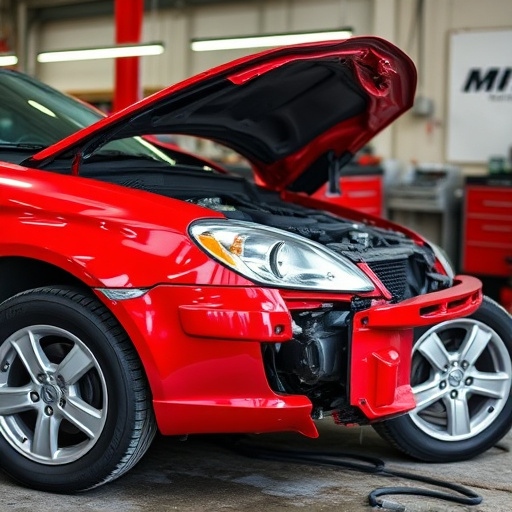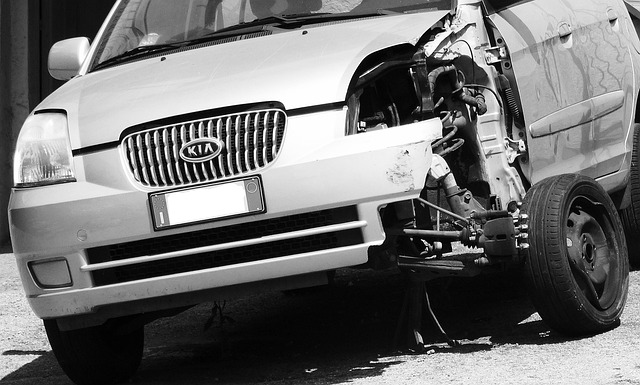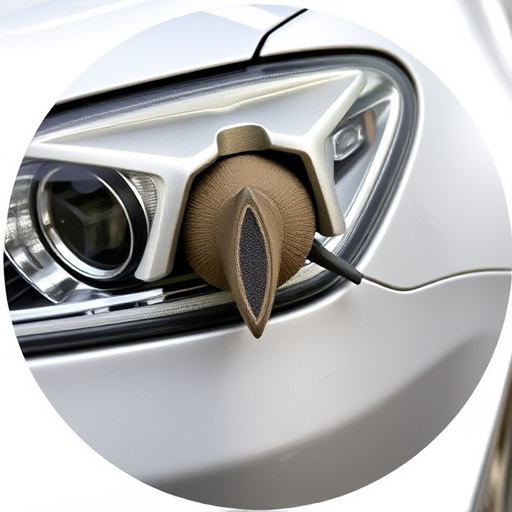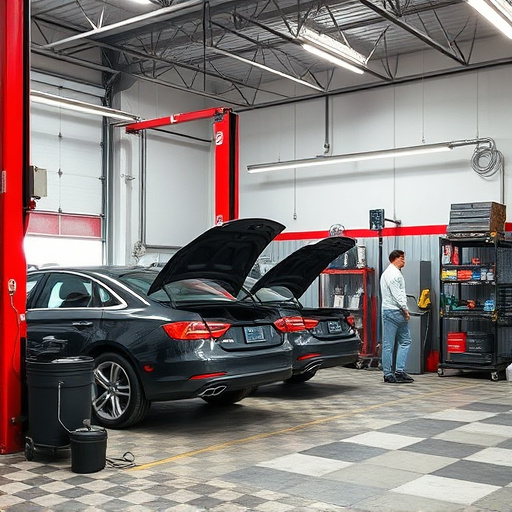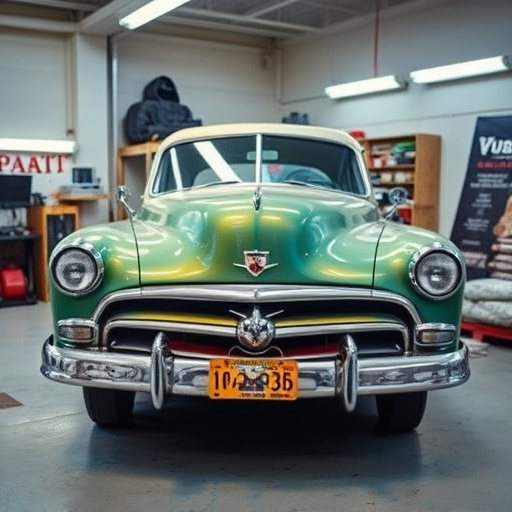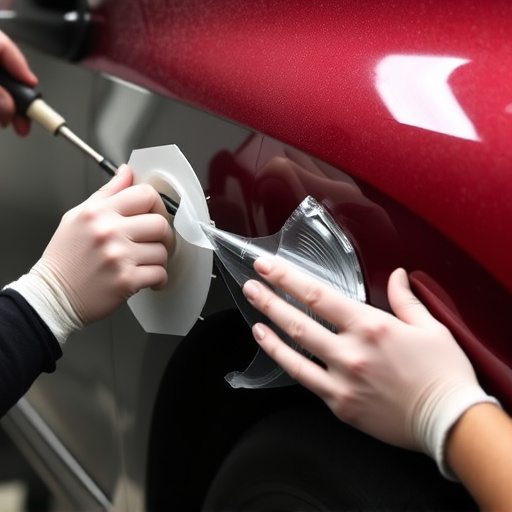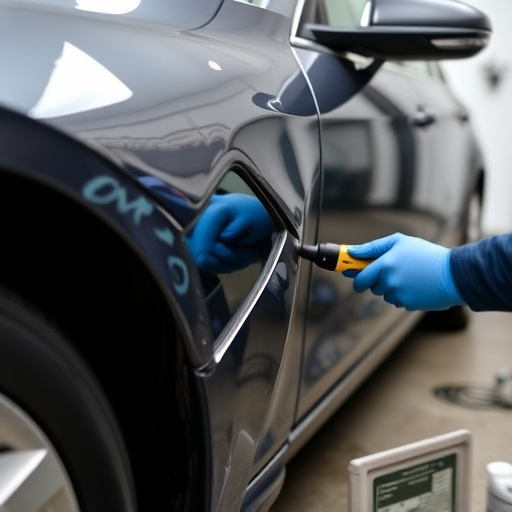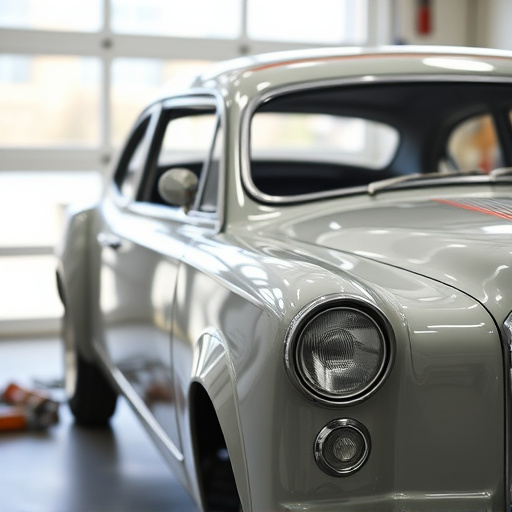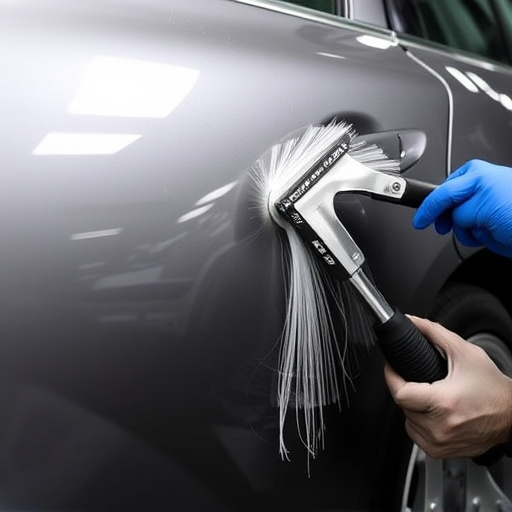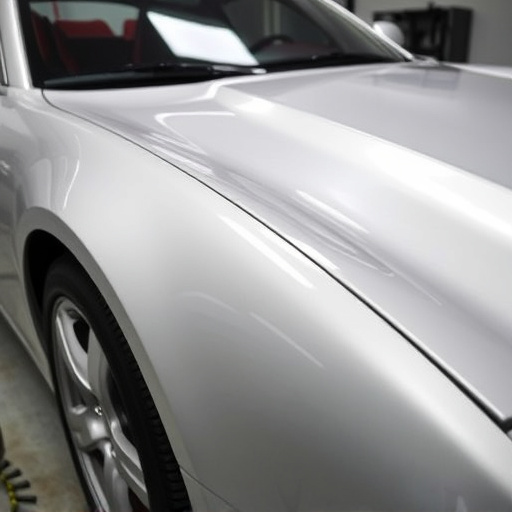The three-stage paint system is a proven method for high-quality, durable automotive finishes, consisting of preparation, primer application, and topcoat finishing. Each stage is crucial for aesthetic and longevity standards, allowing technicians to deliver superior services with clear timelines: 1-2 hours for preparation, 4-6 hours for painting, and 1-2 hours for clear coat application. This system offers faster turnaround times without sacrificing quality, providing precise control over final finishes for all vehicle types.
In today’s fast-paced world, efficient repairs are key. The three-stage paint system offers a structured approach to achieving flawless results swiftly. This article delves into the intricacies of this system, explaining each stage and its optimal timeframe. From understanding the fundamental process to optimizing repair efficiency, you’ll discover how this method streamlines tasks, ensuring long-lasting and high-quality finishes. By adopting these timelines, professionals can revolutionize their painting practices.
- Understanding the Three-Stage Paint System
- Defining Timeframes for Each Stage
- Optimizing Repair Process with This System
Understanding the Three-Stage Paint System

The three-stage paint system is a proven method for achieving durable and high-quality finishes in automotive body work, particularly during repairs. This systematic approach breaks down the painting process into three distinct stages: preparation, primer application, and topcoat finishing. Each stage plays a crucial role in ensuring the final product meets the highest standards of aesthetics and longevity.
In an auto repair shop, understanding this system enables technicians to deliver superior auto repair services. The first stage involves thorough surface preparation, which includes cleaning, sanding, and priming the damaged area. This foundational step is vital for achieving a seamless finish. Following this, applying the correct primer ensures a robust base for the topcoat, enhancing adhesion and ultimately improving the overall durability of the paint job. Finally, the topcoat, often vibrant and customizable, provides the finishing touch, offering both protection and a stunning visual appeal that can rival the original vehicle’s factory finish.
Defining Timeframes for Each Stage
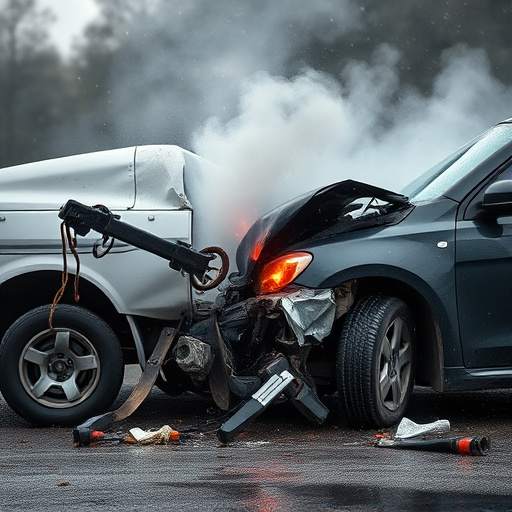
Defining timeframes for each stage is a critical aspect of implementing a successful three-stage paint system in collision repair and auto body shops. The initial preparation phase, involving surface cleaning, sanding, and priming, typically takes 1-2 hours per vehicle, depending on the extent of the damage. This foundational step ensures an optimal base for the subsequent painting process.
The second stage, dedicated to painting, can vary significantly based on factors like color mix time and the shop’s workflow. On average, it accounts for 4-6 hours, including application and drying times. Proper paint coverage and quality are paramount during this phase. The final touch, the clear coat, adds another 1-2 hours, offering protection and a glossy finish. Effective time management in each stage is key to minimizing turnaround times, maximizing efficiency, and ensuring satisfied customers in car dent repair processes.
Optimizing Repair Process with This System

Implementing a three-stage paint system can significantly optimize the repair process for auto repair services and car paint services, making it an ideal approach for even luxury vehicle repair. This system is designed to streamline the painting process, ensuring faster turnaround times without compromising on quality. Each stage has a specific purpose: preparation, application, and finishing.
By dedicating stages to these key aspects, the three-stage paint system allows for precise control over the final outcome. It enables auto body technicians to address any issues in isolation, whether it’s surface imperfections or complex repair work. This meticulous approach not only enhances the efficiency of car paint services but also contributes to longer-lasting and more aesthetically pleasing repairs for all vehicle types.
Implementing a three-stage paint system can significantly streamline and optimize repair processes, ensuring efficient and long-lasting results. By understanding each stage’s purpose and defining clear timeframes, professionals can effectively manage projects, reduce downtime, and enhance overall productivity. This system is a reliable method for achieving high-quality repairs, making it an invaluable tool in the industry.

